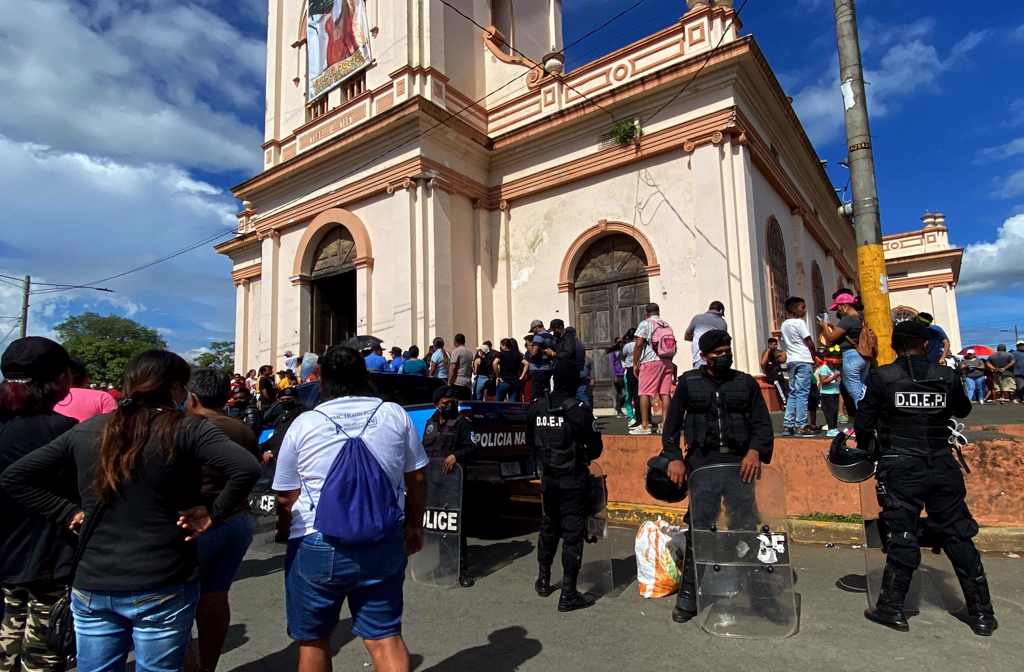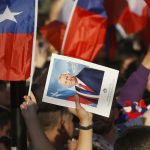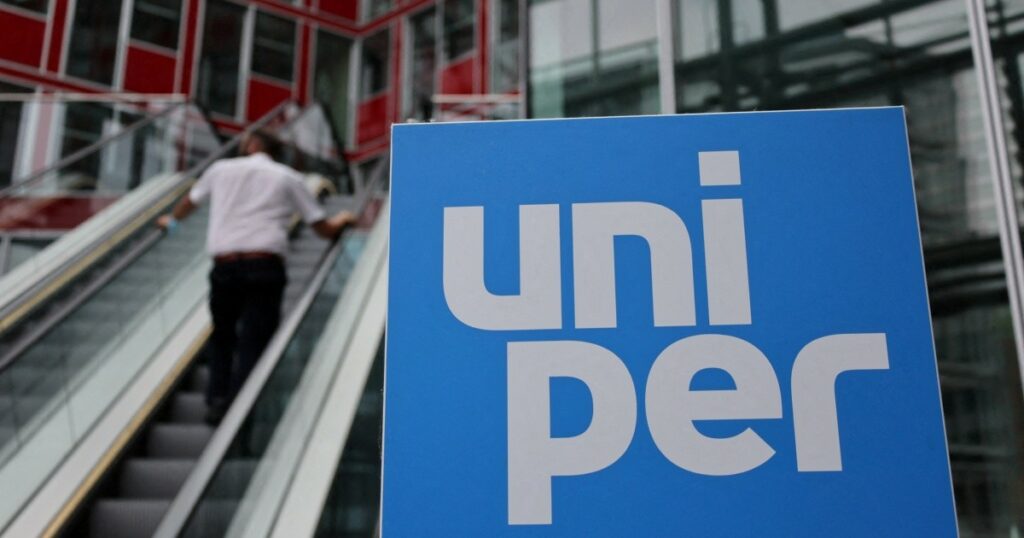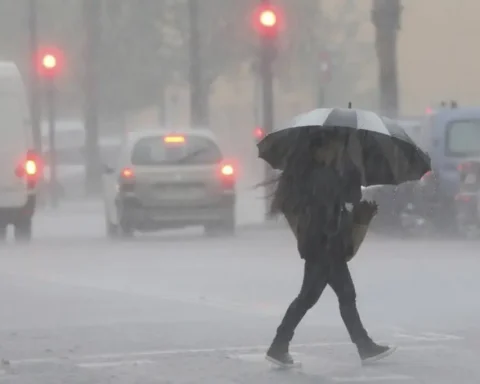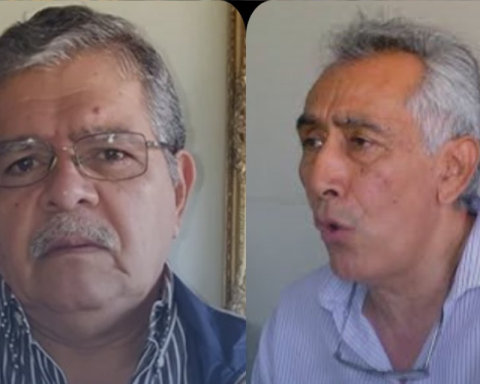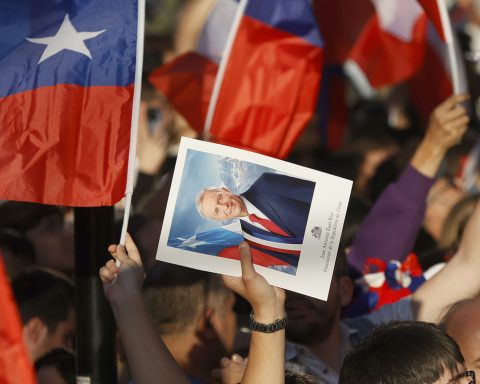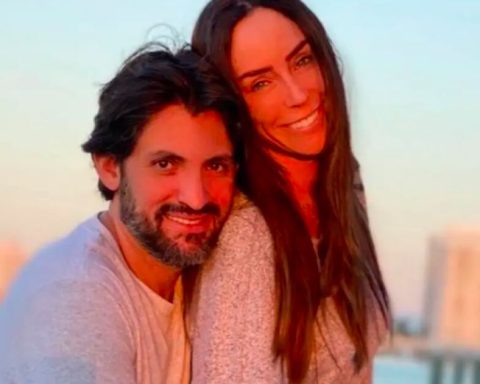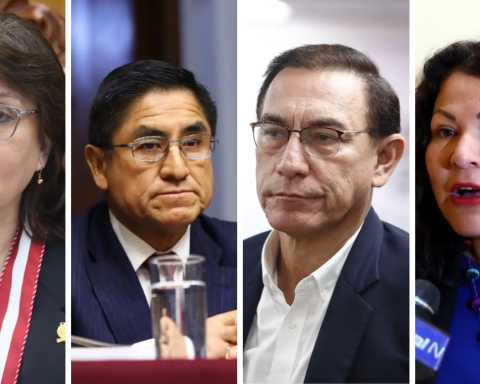In the early hours of this September 20, the parish of San Jerónimo was filled with contagious joy, to the rhythm of the marimba, as occurs every September 20, in the hours prior to the descent of the patron saint of Masaya. That is the beginning of the patron saint festivities of the city, a tradition full of color and irreverence that crashed this year with the wall of repression of the regime of Daniel Ortega and Rosario Murillo.
Dozens of riot police maintained a police fence over the parish of San Jerónimo since 6:40 am. It was another attempt by the dictatorship to sow fear among citizens to prevent them from approaching the holiday, and silence the Catholic Church, subjected to fierce persecution since 2018, which has intensified in recent months.
According to the neighbors, the officers were located around the perimeter of the church, just when there were five hours left before the image would be lowered, scheduled for the afternoon, in an atmosphere of undoubted oppression, added “Federico”, a neighbor who prefers to keep his name under anonymity. For him, the deployment was so great that he counted at least four buses full of officers, “a supreme waste that they should use to persecute common criminals, not the population.”
The mass for the descent of the saint was given at two in the afternoon. Despite the police blockade, a large crowd attended, celebrating the patron saint of the city with cries of “long live the priests, long live the Catholic Church”, “long live the doctor who heals without medicine”, in reference to Saint Jerome, to whom they put a T-shirt with the message “come on, cheer up” and a photo of Monsignor Estanislao García, who died in 2014 and who was in charge of the parish for 38 years.
During the religious celebration, the priest Boanerges Carballo, vicar of the Pastoral Ministry of the Archdiocese of Managua, publicly sent greetings to Cardinal Leopoldo Brenes, under whose ecclesiastical jurisdiction Masaya is located, and who followed up on the religious celebration through social networks. as at least 3,000 people did, according to the parish page on Facebook.
At the end of the celebration, the flashes of the Masayas’ smartphone cameras enlivened the moment. The chicheros sounded on the main altar, but the tension increased due to the possibility that the saint would be removed, which would become an open challenge to Ortega’s repressive apparatus. So, the people decided that the best thing to do was to dance it in the parish, amid applause and a silent and growing contempt for power.
With the display of police force, the authorities complied with an order emanating from the supreme leadership of the institution, presided over by the dictator himself. The Archdiocese of Managua reported on September 17 that the police authorities did not allow the processions of San Jerónimo or San Miguel—both simultaneous festivals in the Masaya tradition and that extend until December—for “reasons of public security” as occurred on August 13 passed with a procession in honor of the Virgin of Fátima in the Managua Cathedral.
“The mass was very fervent, then there was the hubbub of the descent and the image was left in veneration until five in the afternoon. People have already left. Always throughout life the Police make a fence around a few blocks of the parish to leave it as a pedestrian zone. The people who did not pass were those who traveled by vehicle. Thank God, everything went very smoothly, that was the concern we had,” José Antonio Espinoza, parish priest of San Jerónimo, admitted by telephone.
Boos to repressors in San Miguel
The tension dominated the hours that preceded the descent of San Jerónimo. General Commissioner Juan Valle Valle, head of the Masaya plaza, was booed on September 19 at the San Miguel temple, when he entered the church accompanied by officers in another episode of intimidation.
“The booing of the commissioner and the Police was an expression of rejection before some uniformed men who attended not to listen to the mass or to provide security to the attendees. It was a provocation, wanting to intimidate, but things turned out the other way around. We must allow the people of God to celebrate their religious festivals with joy and devotion,” said Father Edwin Román, speaking from exile.
Read: Father Roman, that pillar
The Nicaraguan religious knows directly the reality of the Masayas. He was in charge of the parish of San Miguel between 2014 and 2021. He was also subjected to siege by the Police for defending the human rights of citizens and denouncing his abuses against the Ortega regime.
It is absurd that the dictatorship sees the religious celebrations of yesteryear as a threat to the patron saints of Masaya. Here it is not about measuring forces, it is about allowing Catholics to celebrate, and that the police, instead of an aggressive attitude, guarantee security.
– Edwing Roman (@EdwingRoman14) September 20, 2022
Masaya is considered a bastion of resistance against power throughout its history. He was a direct victim of the dictatorship’s repression in 2018 when police and paramilitaries attacked civilians, killing more than 30 people, according to independent reports.
Currently, the authorities maintain a command post in the brave indigenous neighborhood of Monimbó, from where they control part of the area that rose up against Ortega. Despite this strict surveillance, on some walls the population has let off steam by writing graffiti like “Ortega murderer.”
For Román, who witnessed the attacks on the people and denounced them, the Masayas are believers and traditionalists, and “regardless of the political creed of its citizens, their ‘Tata Chombo’ (Saint Jerome) comes first, before any politician. ”.
The testimonials collected by CONFIDENTIAL coincide in pointing out the new intimidating message from the Police. “Gregorio”, a believer who witnessed the descent of San Miguel on September 19, said that the Police have increased rigidity in the city and caused an evident discomfort and repudiation among the population, even among those who identify themselves as Sandinistas. .
Read: Police confess crime: they assault priestly house and kidnap Bishop Álvarez
During the day of intimidation in the parish of San Miguel, the Police located policewomen in front of the main door of the temple, who were directed by Commissioner Ana García, head of the Traffic Department of the town. The purpose was to intimidate.
“During the mass, the celebrating priests carried out slogans such as ¡Viva San Miguel! Long live Catholic Masaya! Then, the people, from the crowd, shouted Viva Nicaragua Libre! That is why Commissioner Valle Valle entered. I did not get to see him, but I did hear when people shouted the slogans more often and there was a lot of movement, I was very far ahead”, said “Genaro”, who assures that the population feels “impotent” in the face of human rights violations committed by the dictatorship.
Another source recused himself from giving statements, even with the possibility of doing so anonymously, because at this moment the “situation is quite difficult, there is a lot of fear and I do not want problems,” he added.

In addition to permanent police surveillance, in the city of Masaya there have been reports of selective arrests and raids on opponents’ homes. The main leaders of the protests were persecuted: Cristhian Fajardo is in exile and Yubrank Suazo has been imprisoned since last May. He was sentenced to 10 years in prison and fined 56,456 cordobas for the alleged crimes of “conspiracy to undermine” and “propagation of false news.”
“I feel anger, disgust, deep anger, to see how armed groups were shooting to kill kids who were defending themselves with stones and mortars. It is unfair and inhuman not to feel that way, after seeing so many cases of kids who did not deserve such a death,” added “Genaro.”
For an interviewed opponent, the regime is sending the wrong message, because although the parties can be prohibited from the official point of view, the celebration is a very long period and there is a risk of further increasing tension.
“In this year only besieged there would be no celebrations (in Masaya) as happened in 2018, but any event poorly addressed by the Police can start what they are trying to avoid. Now, any escalation of protests will be religious. We must not forget that Masaya is like a bell of the country”, he added.
The Ortega regime has imprisoned three priests: Manuel García de Nandaime in June, Monsignor Leonardo Urbina in July, Oscar Benavidez in Mulukukú in August. That same month, he forcibly transferred amMr. Rolando Álvarez, Bishop of the Diocese of Matagalpawho has been forcibly locked up in his residence in Managua since August 19, while priests, seminarians and a cameraman are being held in El Chipote, the police prison denounced as a torture center by human rights organizations.
In the midst of the crisis, Pope Francis acknowledged on September 15 that he has a dialogue with the regime, which he clarified does not mean that “everything the government does is approved or disapproved.” The Nicaraguan dictatorship has accused the religious of trying to carry out a coup d’état without evidence, expelling the apostolic nuncio Waldemar Stalislaw Sommertag last March, while the hate speech of the Ortega-Murillo regime has risen.
